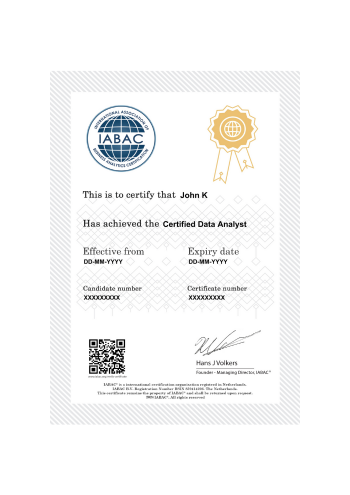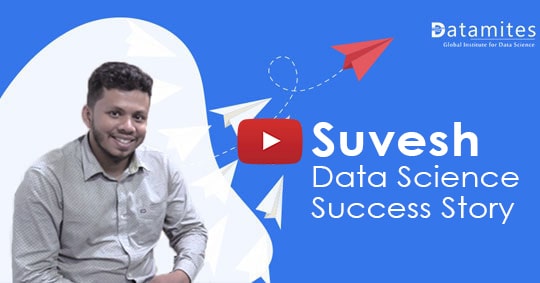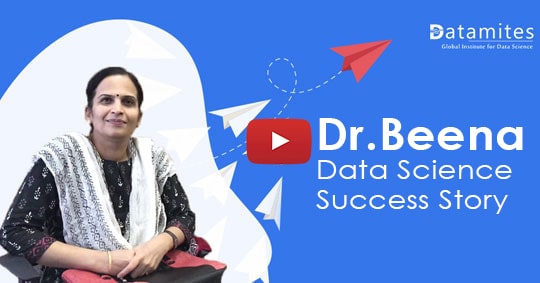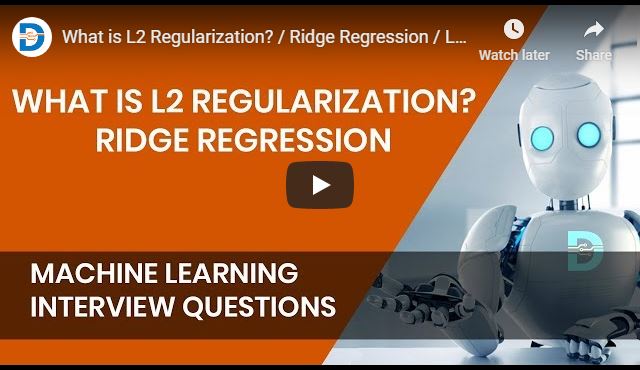Instructor Led Live Online
Self Learning + Live Mentoring
Customize Your Training
The entire training includes real-world projects and highly valuable case studies.
IABAC® certification provides global recognition of the relevant skills, thereby opening opportunities across the world.
MODULE 1: DATA ANALYSIS FOUNDATION
• Data Analysis Introduction
• Data Preparation for Analysis
• Common Data Problems
• Various Tools for Data Analysis
• Evolution of Analytics domain
MODULE 2: CLASSIFICATION OF ANALYTICS
• Four types of the Analytics
• Descriptive Analytics
• Diagnostics Analytics
• Predictive Analytics
• Prescriptive Analytics
• Human Input in Various type of Analytics
MODULE 3: CRIP-DM Model
• Introduction to CRIP-DM Model
• Business Understanding
• Data Understanding
• Data Preparation
• Modeling, Evaluation, Deploying,Monitoring
MODULE 4: UNIVARIATE DATA ANALYSIS
• Summary statistics -Determines the value’s center and spread.
• Measure of Central Tendencies: Mean, Median and Mode
• Measures of Variability: Range, Interquartile range, Variance and Standard Deviation
• Frequency table -This shows how frequently various values occur.
• Charts -A visual representation of the distribution of values.
MODULE 5: DATA ANALYSIS WITH VISUAL CHARTS
• Line Chart
• Column/Bar Chart
• Waterfall Chart
• Tree Map Chart
• Box Plot
MODULE 6: BI-VARIATE DATA ANALYSIS
• Scatter Plots
• Regression Analysis
• Correlation Coefficients
MODULE 1: PYTHON BASICS
• Introduction of python
• Installation of Python and IDE
• Python Variables
• Python basic data types
• Number & Booleans, strings
• Arithmetic Operators
• Comparison Operators
• Assignment Operators
MODULE 2: PYTHON CONTROL STATEMENTS
• IF Conditional statement
• IF-ELSE
• NESTED IF
• Python Loops basics
• WHILE Statement
• FOR statements
• BREAK and CONTINUE statements
MODULE 3: PYTHON DATA STRUCTURES
• Basic data structure in python
• Basics of List
• List: Object, methods
• Tuple: Object, methods
• Sets: Object, methods
• Dictionary: Object, methods
MODULE 4: PYTHON FUNCTIONS
• Functions basics
• Function Parameter passing
• Lambda functions
• Map, reduce, filter functions
MODULE 1 : OVERVIEW OF STATISTICS
MODULE 2 : HARNESSING DATA
MODULE 3 : EXPLORATORY DATA ANALYSIS
MODULE 4 : HYPOTHESIS TESTING
MODULE 1: COMPARISION AND CORRELATION ANALYSIS
• Data comparison Introduction,
• Performing Comparison Analysis on Data
• Concept of Correlation
• Calculating Correlation with Excel
• Comparison vs Correlation
• Hands-on case study : Comparison Analysis
• Hands-on case study Correlation Analysis
MODULE 2: VARIANCE AND FREQUENCY ANALYSIS
• Variance Analysis Introduction
• Data Preparation for Variance Analysis
• Performing Variance and Frequency Analysis
• Business use cases for Variance Analysis
• Business use cases for Frequency Analysis
MODULE 3: RANKING ANALYSIS
• Introduction to Ranking Analysis
• Data Preparation for Ranking Analysis
• Performing Ranking Analysis with Excel
• Insights for Ranking Analysis
• Hands-on Case Study: Ranking Analysis
MODULE 4: BREAK EVEN ANALYSIS
• Concept of Breakeven Analysis
• Make or Buy Decision with Break Even
• Preparing Data for Breakeven Analysis
• Hands-on Case Study: Manufacturing
MODULE 5: PARETO (80/20 RULE) ANALSYSIS
• Pareto rule Introduction
• Preparation Data for Pareto Analysis,
• Performing Pareto Analysis on Data
• Insights on Optimizing Operations with Pareto Analysis
• Hands-on case study: Pareto Analysis
MODULE 6: Time Series and Trend Analysis
• Introduction to Time Series Data
• Preparing data for Time Series Analysis
• Types of Trends
• Trend Analysis of the Data with Excel
• Insights from Trend Analysis
MODULE 7: DATA ANALYSIS BUSINESS REPORTING
• Management Information System Introduction
• Various Data Reporting formats
• Creating Data Analysis reports as per the requirements
MODULE 1: DATA ANALYTICS FOUNDATION
• Business Analytics Overview
• Application of Business Analytics
• Benefits of Business Analytics
• Challenges
• Data Sources
• Data Reliability and Validity
MODULE 2: OPTIMIZATION MODELS
• Predictive Analytics with Low Uncertainty;Case Study
• Mathematical Modeling and Decision Modeling
• Product Pricing with Prescriptive Modeling
• Assignment 1 : KERC Inc, Optimum Manufacturing Quantity
MODULE 3: PREDICTIVE ANALYTICS WITH REGRESSION
• Mathematics behind Linear Regression
• Case Study : Sales Promotion Decision with Regression Analysis
• Hands on Regression Modeling in Excel
MODULE 4: DECISION MODELING
• Predictive Analytics with High Uncertainty
• Case Study-Monte Carlo Simulation
• Comparing Decisions in Uncertain Settings
• Trees for Decision Modeling
• Case Study : Supplier Decision Modeling - Kickathlon Sports Retailer
MODULE 1: MACHINE LEARNING INTRODUCTION
• What Is ML? ML Vs AI
• ML Workflow, Popular ML Algorithms
• Clustering, Classification And Regression
• Supervised Vs Unsupervised
MODULE 2: ML ALGO: LINEAR REGRESSSION
• Introduction to Linear Regression
• How it works: Regression and Best Fit Line
• Hands-on Linear Regression with ML Tool
MODULE 3: ML ALGO: LOGISTIC REGRESSION
• Introduction to Logistic Regression;
• Classification & Sigmoid Curve
• Hands-on Logistics Regression with ML Tool
MODULE 4: ML ALGO: KNN
• Introduction to KNN; Nearest Neighbor
• Regression with KNN
• Hands-on: KNN with ML Tool
MODULE 5: ML ALGO: K MEANS CLUSTERING
• Understanding Clustering (Unsupervised)
• Introduction to KMeans and How it works
• Hands-on: K Means Clustering
MODULE 6: ML ALGO: DECISION TREE
• Decision Tree and How it works
• Hands-on: Decision Tree with ML Tool
MODULE 7: ML ALGO: SUPPORT VECTOR MACHINE (SVM)
• Introduction to SVM
• How It Works: SVM Concept, Kernel Trick
• Hands-on: SVM with ML Tool
MODULE 8: ARTIFICIAL NEURAL NETWORK (ANN)
• Introduction to ANN, How It Works
• Back propagation, Gradient Descent
• Hands-on: ANN with ML Tool
MODULE 1: DATABASE INTRODUCTION
• DATABASE Overview
• Key concepts of database management
• CRUD Operations
• Relational Database Management System
• RDBMS vs No-SQL (Document DB)
MODULE 2: SQL BASICS
• Introduction to Databases
• Introduction to SQL
• SQL Commands
• MY SQL workbench installation
MODULE 3: DATA TYPES AND CONSTRAINTS
• Numeric, Character, date time data type
• Primary key, Foreign key, Not null
• Unique, Check, default, Auto increment
MODULE 4: DATABASES AND TABLES (MySQL)
• Create database
• Delete database
• Show and use databases
• Create table, Rename table
• Delete table, Delete table records
• Create new table from existing data types
• Insert into, Update records
• Alter table
MODULE 5: SQL JOINS
• Inner join, Outer Join
• Left join, Right Join
• Self Join, Cross join
• Windows Functions: Over, Partition, Rank
MODULE 6: SQL COMMANDS AND CLAUSES
• Select, Select distinct
• Aliases, Where clause
• Relational operators, Logical
• Between, Order by, In
• Like, Limit, null/not null, group by
• Having, Sub queries
MODULE 7: DOCUMENT DB/NO-SQL DB
• Introduction of Document DB
• Document DB vs SQL DB
• Popular Document DBs
• MongoDB basics
• Data format and Key methods
• MongoDB data management
MODULE 1: BIG DATA INTRODUCTION
• Big Data Overview
• Five Vs of Big Data
• What is Big Data and Hadoop
• Introduction to Hadoop
• Components of Hadoop Ecosystem
• Big Data Analytics Introduction
MODULE 2: HDFS AND MAP REDUCE
• HDFS – Big Data Storage
• Distributed Processing with Map Reduce
• Mapping and reducing stages concepts
• Key Terms: Output Format, Partitioners, Combiners, Shuffle, and Sort
MODULE 3: PYSPARK FOUNDATION
• PySpark Introduction
• Spark Configuration
• Resilient distributed datasets (RDD)
• Working with RDDs in PySpark
• Aggregating Data with Pair RDDs
MODULE 4: SPARK SQL and HADOOP HIVE
• Introducing Spark SQL
• Spark SQL vs Hadoop Hive
MODULE 1: TABLEAU FUNDAMENTALS
• Introduction to Business Intelligence & Introduction to Tableau
• Interface Tour, Data visualization: Pie chart, Column chart, Bar chart.
• Bar chart, Tree Map, Line Chart
• Area chart, Combination Charts, Map
• Dashboards creation, Quick Filters
• Create Table Calculations
• Create Calculated Fields
• Create Custom Hierarchies
MODULE 2: POWER-BI BASICS
• Power BI Introduction
• Basics Visualizations
• Dashboard Creation
• Basic Data Cleaning
• Basic DAX FUNCTION
MODULE 3: DATA TRANSFORMATION TECHNIQUES
• Exploring Query Editor
• Data Cleansing and Manipulation:
• Creating Our Initial Project File
• Connecting to Our Data Source
• Editing Rows
• Changing Data Types
• Replacing Values
MODULE 4: CONNECTING TO VARIOUS DATA SOURCES
• Connecting to a CSV File
• Connecting to a Webpage
• Extracting Characters
• Splitting and Merging Columns
• Creating Conditional Columns
• Creating Columns from Examples
• Create Data Model
After the Data Analyst course, you can pursue roles like Data Analyst, Business Analyst, Marketing analyst, BI Analyst, Reporting Analyst, and HR analyst. These roles are in sectors like IT, finance, healthcare, marketing, and retail.
Choose the Data Analyst course for comprehensive training in data handling, analysis, and visualization. It offers practical skills, industry-relevant tools, live projects, and enhances job readiness in a growing data-driven market.
The Data Analyst course typically lasts 3 to 6 months, depending on the training mode (full-time/part-time). It covers fundamental to advanced data analysis concepts and tools for career readiness.
The cost of the Data Analyst course varies globally. In the United States, it ranges from approximately $500 to $2,500, including the certification exam. In India, the fee for Data Analyst course typically falls between ₹10,000 and ₹2,00,000, depending on the training provider and course format.
Look for institutes with industry-expert trainers, updated syllabus, hands-on projects, placement support, and positive reviews. Verify course content and student feedback for quality Data Analyst training.
According to a McKinsey report, the U.S. healthcare system could potentially save between $300 billion and $450 billion annually by leveraging big data analytics to enhance operational efficiency, improve patient outcomes, and reduce waste. Demand for Certified Data Analysts is rising globally as businesses rely on data-driven decisions. The need spans across IT, finance, healthcare, e-commerce, and government sectors.
The salary for Data Analysts worldwide, varying by experience, location, and industry. Senior roles and specialized skills can command higher salaries.
Anyone with a basic understanding of computers and a keen interest in data can learn Certified Data Analyst course. Both freshers and working professionals from any background can enroll.
Basic skills include statistical knowledge, Excel, SQL, critical thinking, data visualization, and familiarity with analytical tools like Tableau or Power BI.
Essential tools for Data Analysts include Excel for data handling, SQL for database querying, Tableau and Power BI for visualization, Python and R for analysis, plus reporting software to transform data into actionable insights efficiently.
Data Analysts work in domains like finance, healthcare, e-commerce, marketing, telecom, and manufacturing. Roles include Business Analyst, Marketing Analyst, Financial Analyst, Operations Analyst, and Healthcare Data Analyst, each focusing on domain-specific data insights and decision support.
Yes, the Data Analyst Course is designed for all backgrounds. It starts with basics and gradually builds technical and analytical skills, making it ideal for non-technical learners.
SQL is essential for Data Analysts to query databases, extract, and manipulate large datasets efficiently. It helps in organizing data, performing complex joins, filtering, and aggregating information, making it a fundamental skill for analyzing and deriving insights from data.
Data Analyst focuses on examining existing data to extract insights and support decision-making. Data Science goes beyond by building predictive models and using machine learning to analyze complex datasets and discover patterns.
The Data Analyst course aligns with current job market trends by teaching in-demand tools like Excel, SQL, Tableau, and Power BI. With hands-on capstone and client projects, plus internship and placement support, it equips learners for roles requiring data-driven decision-making and real-world analytical expertise.
Yes, many institutes provide part-time Data Analytics courses with flexible schedules, enabling working professionals and students to learn at their own pace without disrupting their current commitments.
The syllabus includes Data Basics, Statistics, Excel, SQL, Data Visualization using Tableau or Power BI, basics of Python or R, and practical hands-on projects to develop real-world data analysis skills.
A Data Analyst course is a structured training program designed to equip individuals with the skills necessary to collect, process, and analyze data to extract meaningful insights. These courses typically cover topics such as data cleaning, statistical analysis, data visualization, and the use of tools like Excel, SQL, Python, and Tableau.
According to Precedence Research, Asia-Pacific’s data analytics market is set to grow at a 23.5% CAGR from 2024–2034. This surge reflects rising global reliance on analytics for strategic decisions. Data Analyst roles are booming, especially in IT, healthcare, finance, and e-commerce, offering excellent salaries and career advancement opportunities.
Key technical skills include SQL for database querying, Excel for data manipulation, Tableau or Power BI for visualization, Python or R (optional) for advanced analysis, along with data cleaning, visualization techniques, and statistical analysis to interpret data effectively.
Basic programming knowledge in Python or R is helpful but not mandatory. Essential skills include proficiency in SQL and Excel. Having programming skills boosts your job prospects and ability to handle complex data analysis tasks efficiently.
Yes, certifications validate your skills and knowledge, boosting your credibility and employability. They demonstrate your expertise to employers, helping you stand out in a competitive job market and increasing your chances of landing better roles and career growth opportunities.
Data Analysts gather, clean, and analyze data to uncover trends and insights. They create reports and visualizations that help organizations make data-driven decisions, improve strategies, and solve business problems efficiently.
Data Analysts work on projects like sales analysis, customer behavior insights, marketing effectiveness, financial reporting, and performance tracking. They use real datasets to uncover trends, optimize strategies, and support data-driven business decisions.
Yes, Excel is crucial for Data Analysts as it offers powerful features for data manipulation, analysis, and visualization. Its user-friendly interface and versatility make it essential for quick data tasks, reporting, and exploring datasets efficiently in many industries.
DataMites is a top choice for the Certified Data Analyst Course due to its industry-aligned curriculum, expert mentorship, hands-on learning with real-world projects, and strong placement support. The course is designed to build practical skills in data analytics, enabling students to confidently enter the job market with in-demand competencies.
Yes, the Certified Data Analyst Course at DataMites includes internship opportunities. These internships provide valuable real-time experience, allowing students to apply their knowledge in actual business scenarios and enhance their practical skills in data analytics.
Yes, DataMites provides flexible EMI options for the Certified Data Analyst Course. These payment plans make it easier for students to invest in their education without financial strain, offering convenience and affordability.
The Certified Data Analyst (CDA) course fee varies by provider and region. For instance, DataMites offers the course with fees ranging from ₹55,000 to ₹60,000 for classroom training, and ₹34,000 to ₹34,900 for hybrid learning options. These fees may include certification exams and other resources. It's advisable to check with the specific training provider for the most accurate and up-to-date pricing.
Yes, DataMites offers placement assistance for its Certified Data Analyst Course. The institute connects students with hiring companies, provides job support, and helps candidates prepare for interviews, boosting their chances of securing a role in the data analytics domain.
DataMites follows a transparent refund policy. Students who choose to withdraw from the Certified Data Analyst Course within the initial days are eligible for a partial refund. Full details and conditions are available on the official website.
Students enrolled in the Certified Data Analyst Course at DataMites receive comprehensive learning materials, including e-books, case studies, assignments, live project support, and access to an online learning portal. These resources ensure an in-depth understanding and practical exposure to data analytics.
The instructors at DataMites for the Certified Data Analyst Course are experienced industry professionals with strong backgrounds in data analytics and related fields. Their practical knowledge and teaching expertise ensure that students receive high-quality, industry-relevant training.
Yes, DataMites offers the Certified Data Analyst Course with live project opportunities. You will work on real-world data analysis projects that provide practical exposure, helping you apply theoretical concepts in actual business scenarios and boosting your readiness for industry roles.
The Certified Data Analyst Course at DataMites typically spans 6 months, including over 200 hours of intensive training. The course is designed to thoroughly cover core data analysis concepts, tools, and techniques, ensuring you gain strong analytical skills and industry-relevant knowledge.
Yes, DataMites offers flexible learning options if you miss a class. You can attend the missed session in another batch or access recorded lectures through the learning portal, ensuring you stay up to date with the course curriculum without missing key content.
Upon successful completion of the Certified Data Analyst Course at DataMites, you will receive an industry-recognized certification accredited by IABAC, along with a course completion certificate and project experience documentation.
The course equips you with a wide range of in-demand skills, including data cleaning, data visualization, statistical analysis, Excel, SQL, Python programming for data analysis, Tableau, and fundamental machine learning concepts. These skills prepare you for diverse roles in data analytics across industries.
DataMites Flexi Pass provides you with flexible access to classes for a duration of 365 days. You can attend multiple sessions across different batches, enabling you to learn at your own pace and revisit important topics as needed for a comprehensive learning experience.
Yes, DataMites offers a free demo class for the Certified Data Analyst Course. This allows you to experience the training methodology, interact with the mentor, and understand the course structure before making a commitment to enroll.
DataMites has multiple training centers across India, including major cities like Bangalore, Chennai, Hyderabad, Pune, Coimbatore, Ahmedabad, Mumbai, Delhi, Indore, Jaipur, Chandigarh, Kochi, Nagpur, Bhubaneswar and Kolkata. These centers offer classroom sessions, hands-on training, and placement support for Data Analytics courses.
DataMites accepts various payment methods including debit/credit cards, UPI, net banking, and EMI options. These flexible payment modes make it easier for students to enroll in courses according to their financial convenience.
Yes, DataMites allows you to switch between offline and online modes for Data Analyst courses. This flexibility ensures uninterrupted learning and suits your convenience, whether you prefer classroom sessions or online learning.
DataMites offers industry-recognized Certified Data Analyst course with expert trainers, real-time projects, internships, and placement support. The curriculum is designed to equip you with in-demand skills to thrive in the analytics field.
To enroll, visit the official DataMites website, choose the Data Analytics course, fill in the enrollment form, and select your preferred batch. You can also contact their support team for assistance with registration and course details.
The DataMites Placement Assistance Team(PAT) facilitates the aspirants in taking all the necessary steps in starting their career in Data Science. Some of the services provided by PAT are: -
The DataMites Placement Assistance Team(PAT) conducts sessions on career mentoring for the aspirants with a view of helping them realize the purpose they have to serve when they step into the corporate world. The students are guided by industry experts about the various possibilities in the Data Science career, this will help the aspirants to draw a clear picture of the career options available. Also, they will be made knowledgeable about the various obstacles they are likely to face as a fresher in the field, and how they can tackle.
No, PAT does not promise a job, but it helps the aspirants to build the required potential needed in landing a career. The aspirants can capitalize on the acquired skills, in the long run, to a successful career in Data Science.













